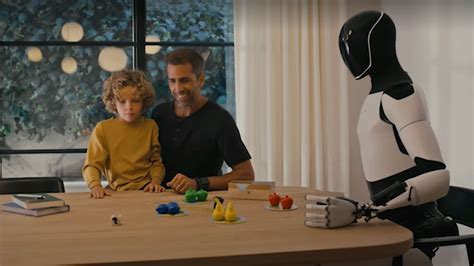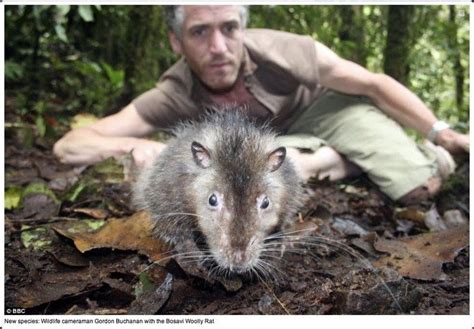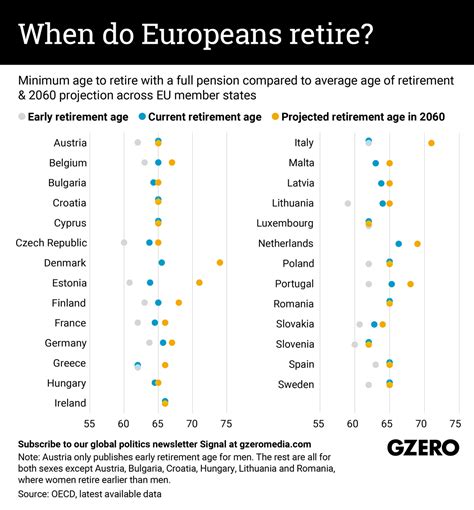
Elon Musk showcased a more advanced prototype of Tesla’s humanoid robot, Optimus, at Tesla’s AI Day 2024, demonstrating improved dexterity and autonomy, though the robot is not yet ready for mass production or household chores like doing dishes, contrary to some initial expectations. The event focused heavily on Tesla’s advancements in artificial intelligence, neural networks, and robotics, highlighting the company’s vision for a future where robots play a significant role in everyday life and industrial automation.
Tesla CEO Elon Musk presented advancements in the Optimus project, initially revealed in 2022, emphasizing the robot’s ongoing development and potential future capabilities. During the event, a newer iteration of Optimus demonstrated its ability to perform increasingly complex tasks, showcasing improved motor skills, balance, and navigation capabilities. While the demonstration aimed to illustrate progress, Musk acknowledged that Optimus is still in the early stages of development and far from being a commercially viable product capable of performing complex tasks like washing dishes. The primary focus of the presentation revolved around the technological advancements driving Optimus and Tesla’s broader ambitions in AI and robotics.
The demonstration included Optimus performing simple actions, such as walking, balancing, and manipulating objects. These capabilities underscored the strides Tesla has made in robotics, particularly in areas like actuator design, sensor integration, and AI-driven control systems. Musk highlighted the significance of these advancements, noting that they are crucial for enabling Optimus to eventually perform useful tasks in real-world environments. Tesla’s long-term goal is to develop a humanoid robot that can perform tasks that are dangerous, repetitive, or boring for humans, potentially transforming industries ranging from manufacturing and logistics to elder care and domestic services.
During the presentation, Musk clarified the timeline for Optimus’s development, stating that while progress has been significant, the robot is still years away from being widely available or capable of fully autonomous operation in unstructured environments. The challenges facing Tesla include improving Optimus’s perception system, refining its motor skills, and enhancing its AI algorithms to enable it to adapt to unpredictable situations. Despite these challenges, Musk expressed confidence in Tesla’s ability to overcome them, citing the company’s expertise in AI, battery technology, and manufacturing as key advantages. He also emphasized the importance of safety and ethical considerations in the development of humanoid robots, noting that Tesla is committed to ensuring that Optimus is used responsibly and in a way that benefits society.
Tesla’s AI Day event was not solely focused on Optimus but also highlighted the company’s broader efforts in artificial intelligence, including advancements in neural networks, self-driving technology, and supercomputing. Musk emphasized that these technologies are interconnected and that progress in one area can accelerate progress in others. For example, the AI algorithms developed for Tesla’s self-driving cars are also being used to train Optimus, enabling it to perceive and interact with the world around it. Similarly, Tesla’s supercomputing infrastructure is being used to simulate and optimize the robot’s movements, allowing engineers to rapidly iterate on its design.
The event also provided insights into Tesla’s approach to robotics, which is characterized by a focus on vertical integration and in-house development. Tesla designs and manufactures many of the key components used in Optimus, including its actuators, sensors, and control systems. This allows the company to have greater control over the robot’s performance and to optimize it for specific tasks. Additionally, Tesla’s vertically integrated approach enables it to leverage its existing manufacturing infrastructure and supply chain to reduce costs and accelerate production.
While Optimus is not yet capable of performing complex tasks like washing dishes, Tesla’s advancements in robotics and AI have the potential to revolutionize various industries and aspects of daily life. The company’s vision for a future where robots work alongside humans, performing dangerous, repetitive, or boring tasks, is ambitious but also reflects a growing trend in the field of automation. As technology continues to advance, it is likely that robots will play an increasingly important role in the economy and society, raising important questions about the future of work, the ethical implications of AI, and the potential benefits and risks of widespread automation.
The latest version of Optimus showcased enhanced walking capabilities, improved hand dexterity through redesigned actuators, and better object recognition driven by advanced AI. Demonstrations included the robot sorting objects and autonomously navigating a simulated factory environment. Tesla aims to develop Optimus into a general-purpose robot capable of performing a wide range of tasks, from factory work to home assistance. Musk anticipates that Optimus, once fully developed, will be more affordable than a car, potentially democratizing access to robotic assistance.
Tesla’s focus extends beyond hardware, encompassing the development of sophisticated AI models and control systems. These AI models enable Optimus to perceive its environment, plan movements, and interact with objects in a natural and intuitive way. Tesla is leveraging its experience in developing self-driving technology to train Optimus, using vast amounts of data collected from its fleet of vehicles to improve the robot’s perception and decision-making abilities. The company is also investing in simulation tools that allow engineers to test and refine Optimus’s AI algorithms in a virtual environment before deploying them on the physical robot.
Tesla’s AI Day 2024 also included presentations on the company’s progress in self-driving technology, neural networks, and supercomputing. These areas are all interconnected and contribute to Tesla’s overall mission of accelerating the world’s transition to sustainable energy and transportation. The company is developing its own custom AI chips and supercomputers to power its self-driving cars and train its AI models. Tesla’s supercomputing infrastructure is one of the most powerful in the world, enabling it to process vast amounts of data and develop increasingly sophisticated AI algorithms.
While the immediate application of Optimus may be in industrial settings, Tesla envisions a future where humanoid robots are commonplace in homes and workplaces, assisting humans with a wide range of tasks. This vision is driven by the belief that robots can free humans from repetitive and dangerous jobs, allowing them to focus on more creative and fulfilling pursuits. However, the widespread adoption of robots also raises important questions about the future of work and the need for retraining and education programs to prepare workers for the changing job market.
The development of Optimus is a complex and challenging undertaking, requiring expertise in a wide range of fields, including robotics, AI, computer vision, and mechanical engineering. Tesla has assembled a team of talented engineers and scientists to work on the project, and the company is actively recruiting new talent to accelerate its progress. Tesla’s culture of innovation and its commitment to pushing the boundaries of technology have made it a magnet for top talent in the field of robotics.
Musk has repeatedly emphasized the importance of safety in the development of Optimus, noting that Tesla is committed to ensuring that the robot is used responsibly and in a way that benefits society. The company is developing safety protocols and safeguards to prevent Optimus from being used for harmful purposes. Tesla is also engaging with ethicists and policymakers to address the ethical implications of humanoid robots and to ensure that they are developed and deployed in a responsible manner.
The announcement of Optimus has generated excitement and speculation in the robotics community, with many experts praising Tesla’s ambition and its potential to disrupt the field. However, some experts have also raised concerns about the challenges of developing a truly general-purpose humanoid robot, noting that it is a far more difficult task than developing self-driving cars. Despite these challenges, Tesla’s commitment to innovation and its track record of success in other fields suggest that it is well-positioned to make significant progress in robotics.
Tesla’s Optimus project represents a bold vision for the future of robotics and automation. While the robot is still in the early stages of development, Tesla’s advancements in AI, battery technology, and manufacturing give it a unique advantage in the field. As technology continues to advance, it is likely that robots will play an increasingly important role in society, and Tesla is positioning itself to be a leader in this emerging industry. The company’s focus on safety, ethics, and responsible innovation will be crucial to ensuring that robots are used in a way that benefits humanity.
The evolution of Optimus from a concept to a functional prototype showcases Tesla’s rapid development cycle. The initial unveiling in 2021 featured a person in a suit, representing a conceptual idea. By 2022, a rudimentary prototype was shown, capable of basic walking and waving. The latest iterations demonstrate significantly improved dexterity, balance, and autonomous navigation capabilities, signifying tangible progress towards a commercially viable product.
Tesla’s emphasis on affordability is a key differentiator in the robotics market. Musk has stated his intention to price Optimus lower than a car, making it accessible to a wider range of consumers and businesses. This affordability is predicated on Tesla’s ability to leverage its existing manufacturing infrastructure and supply chain, as well as its expertise in battery technology and electric motors. The lower price point would democratize access to robotic assistance, potentially transforming industries and everyday life.
The AI powering Optimus is crucial to its functionality. Tesla is utilizing its neural networks and machine learning algorithms, developed for its Autopilot system, to enable Optimus to perceive its surroundings, understand instructions, and perform complex tasks. This AI is trained on vast amounts of data collected from Tesla’s vehicles, providing Optimus with a robust understanding of the real world. The continuous improvement of this AI is essential to enabling Optimus to operate autonomously in unstructured environments.
Tesla’s investment in supercomputing infrastructure is directly tied to the development of Optimus. The company’s supercomputers are used to train the AI models that control Optimus, simulating various scenarios and optimizing the robot’s movements. This allows Tesla to rapidly iterate on Optimus’s design and improve its performance. The supercomputing infrastructure also enables Tesla to develop more sophisticated AI algorithms that can handle complex tasks and adapt to changing environments.
The potential applications of Optimus are vast and span across numerous industries. In manufacturing, Optimus could perform repetitive and physically demanding tasks, increasing efficiency and reducing costs. In logistics, Optimus could assist with warehousing, transportation, and delivery, streamlining supply chains and improving customer service. In healthcare, Optimus could provide assistance to elderly or disabled individuals, improving their quality of life and reducing the burden on caregivers. In the home, Optimus could perform household chores, freeing up time for people to pursue other activities.
The ethical considerations surrounding humanoid robots are significant and require careful attention. Tesla is committed to developing Optimus in a responsible and ethical manner, addressing concerns about job displacement, privacy, and safety. The company is engaging with ethicists, policymakers, and the public to ensure that Optimus is used in a way that benefits society and avoids unintended consequences. Transparency and accountability are crucial to building trust in this technology and ensuring its responsible adoption.
The development of Optimus is not without its challenges. Creating a truly general-purpose humanoid robot that can operate autonomously in unstructured environments is a complex and difficult task. Challenges include improving Optimus’s perception system, refining its motor skills, enhancing its AI algorithms, and ensuring its safety and reliability. Tesla is addressing these challenges through a combination of innovation, experimentation, and collaboration.
Tesla’s approach to robotics is characterized by a focus on vertical integration and in-house development. The company designs and manufactures many of the key components used in Optimus, including its actuators, sensors, and control systems. This allows Tesla to have greater control over the robot’s performance and to optimize it for specific tasks. It also enables Tesla to leverage its existing manufacturing infrastructure and supply chain to reduce costs and accelerate production.
The long-term vision for Optimus is to create a robot that can perform any task that a human can do, but more efficiently and safely. This would have profound implications for the economy and society, potentially transforming industries and creating new opportunities. However, it also raises important questions about the future of work and the need for retraining and education programs to prepare workers for the changing job market.
Tesla’s Optimus project is a testament to the company’s ambition and its commitment to pushing the boundaries of technology. While the robot is still in the early stages of development, its potential to revolutionize various industries and aspects of daily life is significant. Tesla’s focus on affordability, AI, and ethical considerations will be crucial to ensuring that Optimus is used in a way that benefits humanity. The development of Optimus is an ongoing journey, and it will be fascinating to watch its progress in the years to come.
The ongoing development of Optimus reflects Tesla’s broader strategy of integrating artificial intelligence into various aspects of its business, from self-driving cars to energy storage systems. This holistic approach allows Tesla to leverage its expertise in AI across multiple domains, accelerating innovation and creating synergies between different product lines. The company’s commitment to AI is evident in its investments in supercomputing infrastructure, its recruitment of top AI talent, and its focus on developing advanced AI algorithms.
Tesla’s ability to attract and retain top engineering talent is a key factor in its success in robotics and AI. The company offers a challenging and rewarding work environment, where engineers have the opportunity to work on cutting-edge technologies and make a significant impact on the world. Tesla’s culture of innovation and its commitment to pushing the boundaries of what is possible have made it a magnet for talented engineers and scientists.
The potential societal impact of Optimus is far-reaching and could transform the way we live and work. Robots like Optimus could free humans from repetitive and dangerous jobs, allowing them to focus on more creative and fulfilling pursuits. They could also provide assistance to elderly or disabled individuals, improving their quality of life and reducing the burden on caregivers. However, the widespread adoption of robots also raises important questions about the future of work, the ethical implications of AI, and the potential benefits and risks of widespread automation.
Tesla’s Optimus project is a high-risk, high-reward endeavor that could either revolutionize the robotics industry or prove to be a costly distraction. The company faces significant challenges in developing a truly general-purpose humanoid robot that can operate autonomously in unstructured environments. However, Tesla’s track record of success in other fields, its commitment to innovation, and its ability to attract top talent suggest that it is well-positioned to overcome these challenges and make significant progress in robotics. The outcome of the Optimus project will have profound implications for Tesla, the robotics industry, and society as a whole.
Frequently Asked Questions (FAQ) about Tesla Optimus:
Q1: What is Tesla Optimus and what is its primary purpose?
A1: Tesla Optimus is a humanoid robot being developed by Tesla. Its primary purpose, as envisioned by Elon Musk, is to perform tasks that are dangerous, repetitive, or boring for humans. This includes potential applications in manufacturing, logistics, home assistance, and other sectors. Musk has stated that the goal is to create a general-purpose robot that can perform a wide range of tasks, ultimately improving efficiency and productivity across various industries.
Q2: How advanced is the Tesla Optimus robot currently, and when will it be available for purchase?
A2: While Tesla has made significant progress in the development of Optimus, the robot is still in the early stages. Recent demonstrations have shown improved dexterity, balance, and autonomous navigation capabilities. However, according to Elon Musk, Optimus is still years away from being widely available for purchase. The company is focused on improving its perception system, motor skills, and AI algorithms to enable it to adapt to unpredictable situations. A specific timeline for commercial availability has not been announced.
Q3: What technologies are being used to develop Tesla Optimus?
A3: The development of Tesla Optimus leverages several key technologies, including:
- Artificial Intelligence (AI): Tesla is utilizing its neural networks and machine learning algorithms, developed for its Autopilot system, to enable Optimus to perceive its surroundings, understand instructions, and perform complex tasks.
- Actuators and Sensors: Optimus is equipped with advanced actuators that provide precise and controlled movements. Sensors, including cameras and other perception devices, enable the robot to gather information about its environment.
- Battery Technology: Tesla’s expertise in battery technology is crucial for providing Optimus with the power it needs to operate for extended periods.
- Robotics Engineering: Tesla’s team of robotics engineers are working on designing and building the physical structure of Optimus, ensuring its stability, durability, and functionality.
- Supercomputing: Tesla utilizes supercomputers to train the AI models that control Optimus, simulating various scenarios and optimizing the robot’s movements.
Q4: How much will Tesla Optimus cost, and what are the potential applications for it?
A4: Elon Musk has stated his intention to price Optimus lower than a car, making it accessible to a wider range of consumers and businesses. A specific price point has not been announced, but the goal is to democratize access to robotic assistance. Potential applications for Optimus include:
- Manufacturing: Performing repetitive and physically demanding tasks on assembly lines.
- Logistics: Assisting with warehousing, transportation, and delivery.
- Healthcare: Providing assistance to elderly or disabled individuals.
- Home Assistance: Performing household chores and providing companionship.
- Construction: Assisting with various construction tasks, improving safety and efficiency.
Q5: What are the ethical considerations surrounding the development and deployment of Tesla Optimus?
A5: The development and deployment of humanoid robots like Tesla Optimus raise several ethical considerations, including:
- Job Displacement: The potential for robots to displace human workers in various industries.
- Safety: Ensuring that robots are safe to operate around humans and do not pose a risk of injury.
- Privacy: Protecting the privacy of individuals in environments where robots are deployed.
- Bias: Addressing potential biases in AI algorithms that could lead to discriminatory outcomes.
- Control: Ensuring that robots are used responsibly and are not programmed to perform harmful tasks.
Tesla has stated its commitment to developing Optimus in a responsible and ethical manner, engaging with ethicists, policymakers, and the public to address these concerns and ensure that the robot is used in a way that benefits society.









